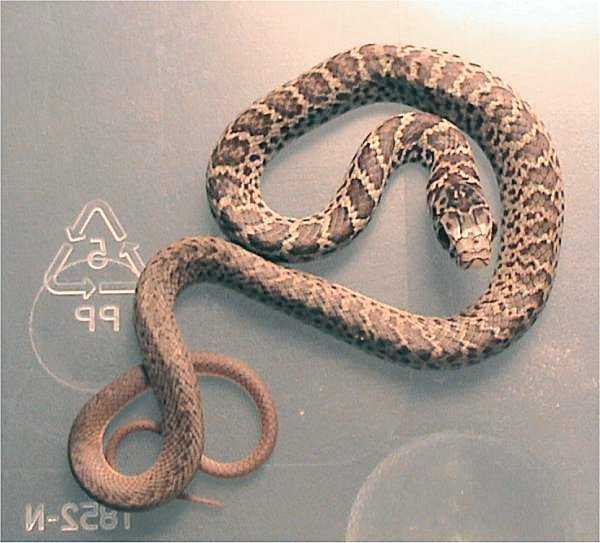So, as I wrote on the Eastern Ratsnake page, this is a conundrum of a snake that can be confused with the Eastern Ratsnake. To learn more about the difference, check out that page.
This is another snake that looks completely different as a juvenile, but then mellows out into an almost mostly black snake. In fact, the coloration of this snake as a juvenile is a light tan with a diamond pattern. I found one in an open coffee can in my shed, and freaked out for a second because I thought it was a Copperhead. I actually let it go in the woods before I knew what it was (I just crossed my fingers it would go away – I’ve never killed a snake, and I do know Copperheads are around here). I was so happy to find out later that it was actually juvenile Black Racer. Hurrah!
There are TWO reasons why I love this snake. (There is only one reason why I love the Ratsnake). Well, the first reason is similar to the Ratsnake: hangs out in my shed and garden, and hopefully eats all of the field mice that get into everything and poops everywhere and live in my car, and are generally something that I don’t want around.
The other reason why I like the Northern Black Racer is because, unlike the Ratsnake, which is a pretty chill snake, it’s more aggressive and territorial. That means that it will chase off Copperheads, and in fact, can even fight with them without being affected by their bite (at least I read that somewhere). So THANK YOU Black Racer! You are my friend!
This photo is of a Black Racer that got caught in some plastic netting (which I don’t use anymore). We had to cut it out so slowly, but we were able to set it free. Also, from that experience, I now know that snakes smell like fish.
Alternate Names: American black snake, American racer snake, black chaser, black runner, blue racer, chicken snake, cow sucker, green snake, hoop snake, horse racer, slick black snake, true black snake, white-throated racer. Size: 36-60" long Habitat: "Found frequently near water, but also in brush, trash piles, roadsides, and swamps, and in suburbia; it is the most common snake in residential neighborhoods in Florida. It spends most of its time on the ground, but it is a good tree climber and may be found in shrubs and trees where bird nests can be raided for eggs and chicks, as well as small adult birds such as finches, canaries, and thrashers." From wikipedia.com Identification: "Body of adults slender and uniformly black dorsally, dark gray ventrally; venter of tail uniformly light gray; head black except for anterior portion of snout, which is brownish; chin and a variable portion of venter of neck white; some white pigment on supralabial scales in some individuals; racers in shedding cycle appear dark gray to light brown." From virginiaherpetologicalsociety.com
Juvenile Black Racer: See how I thought it was a baby Copperhead?
Photo credit: Dawson, CC BY-SA 2.5, via Wikimedia Commons










